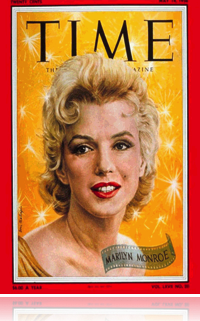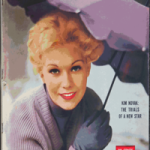
TIME
TIME is an American weekly news magazine published in New York City. It was founded in 1923 and for decades was dominated by Henry Luce, who built a highly profitable stable of magazines. Time Europe is published in London and also covers the Middle East, Africa and, since 2003, Latin America. Time Asia is based in Hong Kong. The South Pacific edition, which covers Australia, New Zealand, and the Pacific Islands, is based in Sydney, Australia.
Time has the world’s largest circulation for a weekly news magazine, and has a readership of 25 million, 20 million of which are based in the United States.
Time magazine was created in 1923 by Briton Hadden and Henry Luce, making it the first weekly news magazine in the United States. The two had previously worked together as chairman and managing editor respectively of the Yale Daily News. They first called the proposed magazine Facts. They wanted to emphasize brevity, so that a busy man could read it in an hour. They changed the name to Time and used the slogan “Take Time–It’s Brief”. Hadden was considered carefree and liked to tease Luce and saw Time as important but also fun, which accounted for its heavy coverage of celebrities (including politicians), the entertainment industry, and pop culture—criticized as too light for serious news.
It set out to tell the news through people, and for many decades the magazine’s cover depicted a single person. The first issue of Time was published on March 3, 1923, featuring Joseph G. Cannon, the retired Speaker of the House of Representatives on its cover; the cover price was 15¢ (equivalent to $2.08 today) On Hadden’s death in 1929, Luce became the dominant man at Time and a major figure in the history of 20th-century media.
By the time Henry Luce died in 1967, the Time Inc. stock which Luce owned was worth about $109 million and yielded him a yearly dividend income of more than $2.4 million, according to Curtis Prendergast’s The World of Time Inc: The Intimate History of a Changing Enterprise 1957–1983. The value of the Larsen family’s Time stock was now worth about $80 million during the 1960s and Roy Larsen was both a Time Inc. director and the Chairman of its Executive Committee, before serving as Time’s vice-chairman of the board until the middle of 1979. According to the September 10, 1979 issue of The New York Times, “Mr. Larsen was the only employee in the company’s history given an exemption from its policy of mandatory retirement at age 65”.
After Time magazine began publishing its weekly issues in March 1923, Roy Larsen was able to increase its circulation by utilizing U.S. radio and movie theaters around the world. It often promoted both Time magazine and U.S. political and corporate interests. According to The March of Time, as early as 1924, Larsen had brought Time into the infant radio business with the broadcast of a 15-minute sustaining quiz show entitled Pop Question which survived until 1925″. Then, in 1928, Larsen “undertook the weekly broadcast of a 10-minute series of brief news summaries, drawn from current issues of Time magazine.
Larsen next arranged for a 30-minute radio program, The March of Time, to be broadcast over CBS, beginning on March 6, 1931. Each week, the program presented a dramatisation of the week’s news for its listeners, thus Time magazine itself was brought “to the attention of millions previously unaware of its existence”, according to Time Inc.: The Intimate History of a Publishing Enterprise 1923–1941, leading to an increased circulation of the magazine during the 1930s.
Time became part of Time Warner in 1989, along with Warner Bros. In 2000, the magazine became part of AOL Time Warner, which reverted to the name Time Warner in 2003.
In 2009 Time announced that they were introducing a personalized print magazine, Mine, mixing content from a range of Time Warner publications based on the reader’s preferences. The new magazine met with a poor reception, with criticism that its focus was too broad to be truly personal.
Time Inc. and Apple have come to an agreement wherein U.S. subscribers to Time will be able to read the iPad versions for free, at least until the two companies sort out a viable digital subscription model.
In January 2013, Time Inc. announced that it would cut nearly 500 jobs – roughly 6% of its 8,000 staff worldwide. Although Time magazine has maintained high sales, its ad pages have declined significantly over time.
Style
Time initially possessed a distinctive writing style, making regular use of inverted sentences. This was parodied in 1936 by Wolcott Gibbs in The New Yorker: “Backward ran sentences until reeled the mind […] Where it all will end, knows God!”
Until the mid-1970s, Time had a weekly section called “Listings”, which contained capsule summaries and/or reviews of then-current significant films, plays, musicals, television programs, and literary bestsellers similar to The New Yorker‘s “Current Events” section.
Time is also known for its signature red border, first introduced in 1927. The border has only been changed four times since 1927: The issue released shortly after the September 11 attacks on the United States featured a black border to symbolize mourning. However, this edition was a special “extra” edition published quickly for the breaking news of the event; the next regularly scheduled issue contained the red border. Additionally, the April 28, 2008 Earth Day issue, dedicated to environmental issues, contained a green border. The next change in border was in the September 19, 2011 issue, commemorating the 10th anniversary of the September 11 attacks with a metallic silver border. The most recent change (again with a silver border) was in the December 31, 2012 issue, noting Barack Obama’s selection as Person of the Year.
In 2007, Time engineered a style overhaul of the magazine. Among other changes, the magazine reduced the red cover border in order to promote featured stories, enlarged column titles, reduced the number of featured stories, increased white space around articles, and accompanied opinion pieces with photographs of the writers. The changes have met both criticism and praise.
Person of the Year
Time ’s most famous feature throughout its history has been the annual “Person of the Year” (formerly “Man of the Year”) cover story, in which Time recognizes the individual or group of individuals who have had the biggest impact on news headlines over the past 12 months. The distinction is supposed to go to the person who, for good or ill, has most affected the course of the year; it is therefore not necessarily an honor or a reward. In the past, such figures as Adolf Hitler and Joseph Stalin have been Man of the Year.
Time 100
In recent years Time has assembled an annual list of the 100 most influential people of the year. Originally, they had made a list of the 100 most influential people of the 20th century. These issues usually have the front cover filled with pictures of people from the list and devote a substantial amount of space within the magazine to the 100 articles about each person on the list. There have, in some cases, been over 100 people, when two people have made the list together, sharing one spot.
The magazine also compiled “All-TIME 100 best novels” and “All-TIME 100 best movies” lists in 2005, “The 100 Best TV Shows of All-TIME” in 2007, and “All-TIME 100 Fashion Icons” in 2012.
Red X covers
During its history, for four non-consecutive occasions, Time has released a special issue with a cover showing a red X scrawled over the face of a man. The first Time magazine with a red X cover was released on May 7, 1945, showing a red X over Adolf Hitler’s face. Fifty-eight years later, on April 21, 2003, Time released its second red X cover issue with a red X over Saddam Hussein’s face, two weeks after the Iraqi dictator’s overthrow. The third red X cover Time magazine was released June 13, 2006 following the death of Abu Musab al-Zarqawi in a U.S. airstrike in Iraq. The fourth red X cover Time magazine was released May 2011 after the death of Osama bin Laden.
Time for Kids
Time for Kids is a division magazine of Time that is especially published for children and is mainly distributed in classrooms. TFK contains some national news, a “Cartoon of the Week”, and a variety of articles concerning popular culture. An annual issue concerning the environment is distributed near the end of the U.S. school term. The publication rarely exceeds ten pages front and back. It is used in many libraries.



